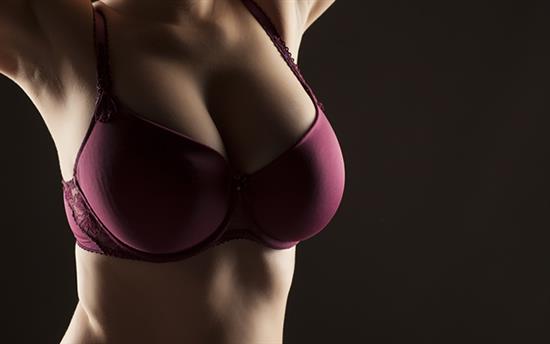
Breast augmentation can be advantageous when pursued sensibly, and is an excellent option for women who are self-conscious about the shape or size of their natural breasts. However, Mr. Jag Chana advises against extreme augmentation, which has recently been nicknamed ‘Jordan Syndrome’ in the media, thanks to model Katie ‘Jordan’ Price.
Figures taken for the year 2012/2013 show that the number of women admitted into medical care for complications of one sort or another related to breast implants has risen over 500% since 2009. In part this may be due to the PIP crisis highlighting some of the concerns but in actual fact the number of women with ruptured PIP breast implants has been a small extra number and does not explain the whole story. This increase has been attributed in the press to patients insisting on increasingly larger implants, to imitate the trend for disproportionately large breasts brought about by celebrities and glamour models.
The Department of Health point out, however, that around 30,000 breast augmentation procedures are performed each year, of which the problematic ones are a small proportion. Breast augmentation is largely successful, with the majority of patients happy with the end result and not facing any further complications or problems – particularly when performed by a highly qualified and experienced plastic surgeon.
Although large breast implants can cause complications they are not necessarily more likely to rupture. When an excessively large breast implant is used the overlying tissue is stretched to such an extent it becomes very thin. This causes the implant to be more palpable with a tendency to see a rippling or fold in the implant through the skin. The main complications are long term. The weight of the implant ultimately can cause the breast to ‘drop’ and this can compromise the shape which can then only be corrected using an uplift. Also, if a smaller implant is used in the future for replacement the skin will be too loose and again an uplift will be needed to tighten the skin envelope. The secondary surgery in this situation is fraught with complications since the thin stretched breast tissue has a poor blood supply and any surgery can result in healing complications and even loss of the nipple.
When considering breast augmentation, it is imperative that you consider the long term risks and benefits thoroughly before proceeding. A consideration of the size of the breast implant is important and although the desire for a large implant is at the forefront of that decision for many women this is not always beneficial. In order to avoid the long term risks Mr Chana will always advise on the most suitable size of breast implant which would meet your expectations but if this expectation is unrealistic and could cause long term complications Mr Chana will always advise against it.
Although the shape and size of a client’s breast augmentation is largely down to personal discretion, Mr. Chana’s experience and expertise should form part of the patient’s decision. During consultation, he will carefully discuss any specific patient requests, outlining the pros and cons and offering a much-valued expert opinion.
Breast augmentation can have a myriad of benefits because concerns about having small breasts can be psychologically detrimental to women’s confidence levels. Breast augmentation methodology is currently incredibly sophisticated with a number of techniques and types of breast implants available. The entire procedure usually takes between one and one and a half hours under general anaesthetic, a week off work is required and the total recovery time is around 4-6 weeks. If you do decide to undergo breast augmentation surgery, discovering the right surgeon who will provide honest and realistic advice for you can be the biggest challenge of all.
Mr. Jag Chana is an award-winning consultant plastic surgeon with over 20 years’ experience in the sector. He works out of Spire Bushey Hospital, one of the most highly acclaimed plastic surgery institutions in the UK.
Furthermore, the divisive issue of ‘under or over’ the muscle for breast augmentation is not an issue at Mr Chana’s practice, as he often uses a specialist ‘half and half’ technique which combines the advantages of both methods; the natural cleavage of under-the-muscle surgery combined with the palpable shape achieved through over-the-muscle procedures. The exact position of the implant will be discussed at the consultation according to suitability and in each patient, this may be different.
Mr. Chana also utilises a rapid recovery method, meaning many patients will be home the same day able to return to work and their normal lives only 7-10 days after surgery.
If you would like more information on breast augmentation – or any other cosmetic treatment, both surgical and non-surgical – book your consultation with Mr Jag Chana today.
